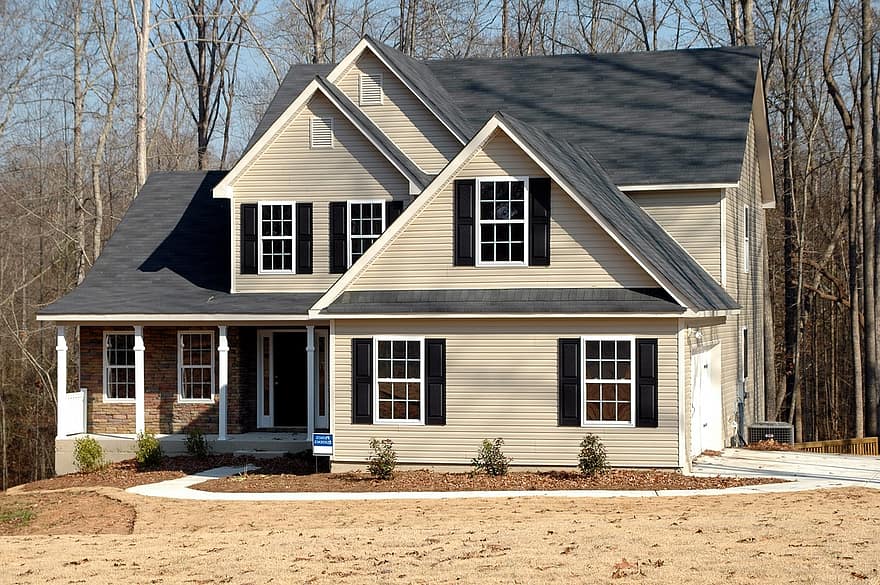Mortgages: Choosing Between Fixed and Adjustable Rates

The monumental decision to secure home financing is arguably the single largest and most complex financial commitment an individual or family will ever undertake in their lifetime. A mortgage is far more than a simple debt instrument. It is a long-term contract that directly dictates a household’s monthly budget, its exposure to financial risk, and its overall capacity for wealth building for decades to come.
Historically, borrowers faced a limited set of options. The modern lending market, however, presents a critical strategic choice between payment predictability and lower initial cost. Fixed-Rate versus Adjustable-Rate Mortgages (ARMs) represents the indispensable, specialized financial discipline dedicated to analyzing this fundamental risk trade-off. This crucial choice determines whether the interest rate—and thus the monthly payment—remains constant over the entire loan term or fluctuates periodically based on external economic indicators.
Understanding the core structural differences, the intricate mechanics of adjustment, and the strategic alignment of each mortgage type with the borrower’s risk tolerance is absolutely non-negotiable. This knowledge is the key to minimizing financial uncertainty, maximizing equity gain, and securing the most favorable terms for the journey of homeownership.
The Strategic Imperative of Mortgage Structure
The choice of mortgage type is a strategic financial decision that fundamentally defines the borrower’s risk exposure over a 15- to 30-year period. This choice dictates the amount of certainty or variability built into the household’s largest monthly expenditure. Selecting the wrong structure can lead to severe financial distress if market conditions change unexpectedly.
A mortgage is a long-term, secured installment loan. It is backed by the property itself as collateral. The loan is fully repaid only after two or three decades. This extended time horizon amplifies the financial impact of even minor differences in the interest rate or adjustment structure. The structure is the contract that protects or exposes the borrower.
The primary function of the mortgage structure is to balance the borrower’s need for budget predictability against their desire for the lowest possible interest cost. Fixed-rate mortgages offer maximum certainty. Adjustable-rate mortgages (ARMs) offer lower initial rates but introduce substantial long-term payment risk.
The borrower must align their mortgage choice meticulously with their time horizon and their financial stability. A borrower planning to sell the home in five years has a vastly different optimal strategy than a borrower planning to remain in the home for thirty years. The chosen structure must serve the borrower’s specific, stated goals.
Fixed-Rate Mortgages (FRMs) – The Anchor

The Fixed-Rate Mortgage (FRM) is the most common, popular, and financially secure mortgage product available globally. It is the preferred choice for borrowers who prioritize predictability and security above all other financial considerations. The FRM acts as the ultimate financial anchor for the household budget.
A. Non-Negotiable Interest Rate
The defining characteristic of an FRM is that the interest rate (APR) is set at the time of closing. It remains absolutely constant and unchanged for the entire, full duration of the loan term. This term is most commonly 15 or 30 years. This fixed rate eliminates all future financial uncertainty related to interest rate fluctuations.
B. Stable Monthly Payments
Because the interest rate is non-negotiable, the borrower’s monthly payment for Principal and Interest (P&I) also remains fixed and perfectly stable for the full life of the loan. This absolute predictability simplifies long-term budget planning immensely. The borrower is entirely shielded from the risk of sudden, painful increases in borrowing costs, regardless of how high market interest rates may climb in the future.
C. Protection Against Inflation
The FRM provides crucial financial protection against future inflation. If inflation rises, the borrower continues to repay the mortgage with dollars that possess less purchasing power. Simultaneously, the value of the underlying real estate asset typically appreciates with inflation. This combination provides a powerful financial hedge and accelerates the building of equity in real terms.
D. Strategic Trade-Off
The strategic trade-off for this non-negotiable stability is the potentially higher initial interest rate. FRMs often carry a higher starting APR than the introductory rate offered by an ARM. This premium pays for the long-term security provided by the fixed rate guarantee. The borrower pays a slight upfront cost for guaranteed future peace of mind.
Adjustable-Rate Mortgages (ARMs) – The Flexibility

The Adjustable-Rate Mortgage (ARM) is a more complex, dynamic loan product. It is designed for borrowers who prioritize the lowest possible initial monthly payments and are willing to accept the high long-term risk of potential rate volatility. ARMs offer flexibility but demand higher risk tolerance.
E. Initial Fixed Period
An ARM begins with a specific, fixed introductory period. The interest rate remains low and constant for this initial term, often 3, 5, 7, or 10 years (e.g., a “5/1 ARM” is fixed for 5 years). This low introductory rate provides a significant, immediate advantage in monthly cash flow compared to a standard FRM. This low rate is the product’s primary market appeal.
F. The Adjustment Mechanism
After the initial fixed period expires, the interest rate becomes variable and subject to periodic adjustment for the remainder of the loan term. The new rate is calculated by adding a fixed margin (a premium determined at closing) to a published, external market index (e.g., the Secured Overnight Financing Rate, SOFR). The index dictates the movement. This adjustment can result in the monthly payment rising or falling significantly.
G. Caps and Limits
To prevent extreme financial shocks, ARMs include regulatory caps and limits on rate movement. The Periodic Caplimits how much the rate can increase in any single adjustment period (e.g., 1% per year). The Lifetime Cap sets the absolute maximum interest rate the loan can ever reach. Borrowers must meticulously understand these caps. The worst-case scenario must be calculated based on the lifetime cap.
H. Strategic Use and Risk
The strategic use of an ARM is strictly for a borrower who accurately anticipates selling the home or refinancing the loan before the low, fixed introductory period expires. ARMs are high-risk. They expose the borrower to substantial, unpredictable rate volatility if the economy experiences a sharp rise in interest rates after the fixed period ends. The borrower assumes the risk the lender avoids.
The Decision Matrix and Trade-Offs
Choosing the optimal mortgage structure requires a systematic analysis that aligns the loan’s characteristics with the borrower’s financial stability, risk aversion, and planned time horizon in the property. The decision is a function of predictable risk versus potential reward. Personal circumstances dictate the strategic choice.
I. Time Horizon Analysis
A borrower who expects to sell the home within the 5 to 7-year range should seriously consider a 5/1 ARM. The borrower benefits from the lower initial monthly payments. They exit the loan before the high-risk variable adjustment period begins. Conversely, a borrower planning to live in the home for more than 10 years should overwhelmingly choose the security and predictability of the FRM. The FRM shields them from long-term volatility risk.
J. Cash Flow vs. Total Cost
ARMs prioritize maximizing immediate monthly cash flow. They allow the borrower to manage a slightly larger home purchase with a lower initial monthly obligation. FRMs prioritize minimizing the total cost of interest paid over the life of the loan and eliminating all payment uncertainty. The borrower must decide which financial metric is the highest priority for their specific needs.
K. The Refinancing Risk
Choosing an ARM carries the refinancing risk. The borrower must hope that market interest rates are low when their fixed period expires. If rates are high, they may be forced into an expensive new loan or face massive payment shock. The decision to select an ARM is a bet on the future direction of interest rates. The FRM eliminates this bet entirely.
L. Qualification and Affordability
Lenders qualify borrowers for an ARM based on the lower introductory payment. Borrowers must calculate their affordability based on the loan’s lifetime cap. They must ensure they can comfortably afford the payment in the worst-case scenario. Underwriters often use the worst-case scenario rate to test the borrower’s true capacity.
Conclusion
Fixed-Rate versus Adjustable-Rate Mortgages (ARMs) defines the fundamental risk trade-off in home financing.
The Fixed-Rate Mortgage (FRM) is the ultimate financial anchor, guaranteeing a constant interest rate and stable payment for the full loan term.
The FRM strategically shields the borrower from long-term rate volatility, providing crucial financial certainty and acting as an inflation hedge.
The Adjustable-Rate Mortgage (ARM) offers lower initial monthly payments but exposes the borrower to high, unpredictable interest rate fluctuations after the initial fixed period expires.
An ARM is strategically suitable only for borrowers who have a clear, credible plan to refinance or sell the property before the low introductory rate resets.
The ARM’s adjustment mechanism is dictated by adding a fixed margin to a volatile external market index, significantly raising the potential for payment shock.
The risk of being forced to refinance at a high interest rate is the central financial danger inherent in the structure of the Adjustable-Rate Mortgage.
The borrower must calculate affordability based on the loan’s worst-case scenario lifetime cap, even when taking advantage of the low initial payment.
Mastering the distinction between these two structures is the non-negotiable key to minimizing interest cost and managing long-term household budget risk.
The strategic choice must meticulously align the loan’s features with the borrower’s financial stability, risk tolerance, and clear time horizon in the home.
The security provided by the Fixed-Rate Mortgage is the final, authoritative guarantor of stability and long-term equity growth for the majority of homeowners.
Understanding the complex interplay of rates, caps, and amortization is the key to accelerating financial resilience and achieving successful homeownership.
